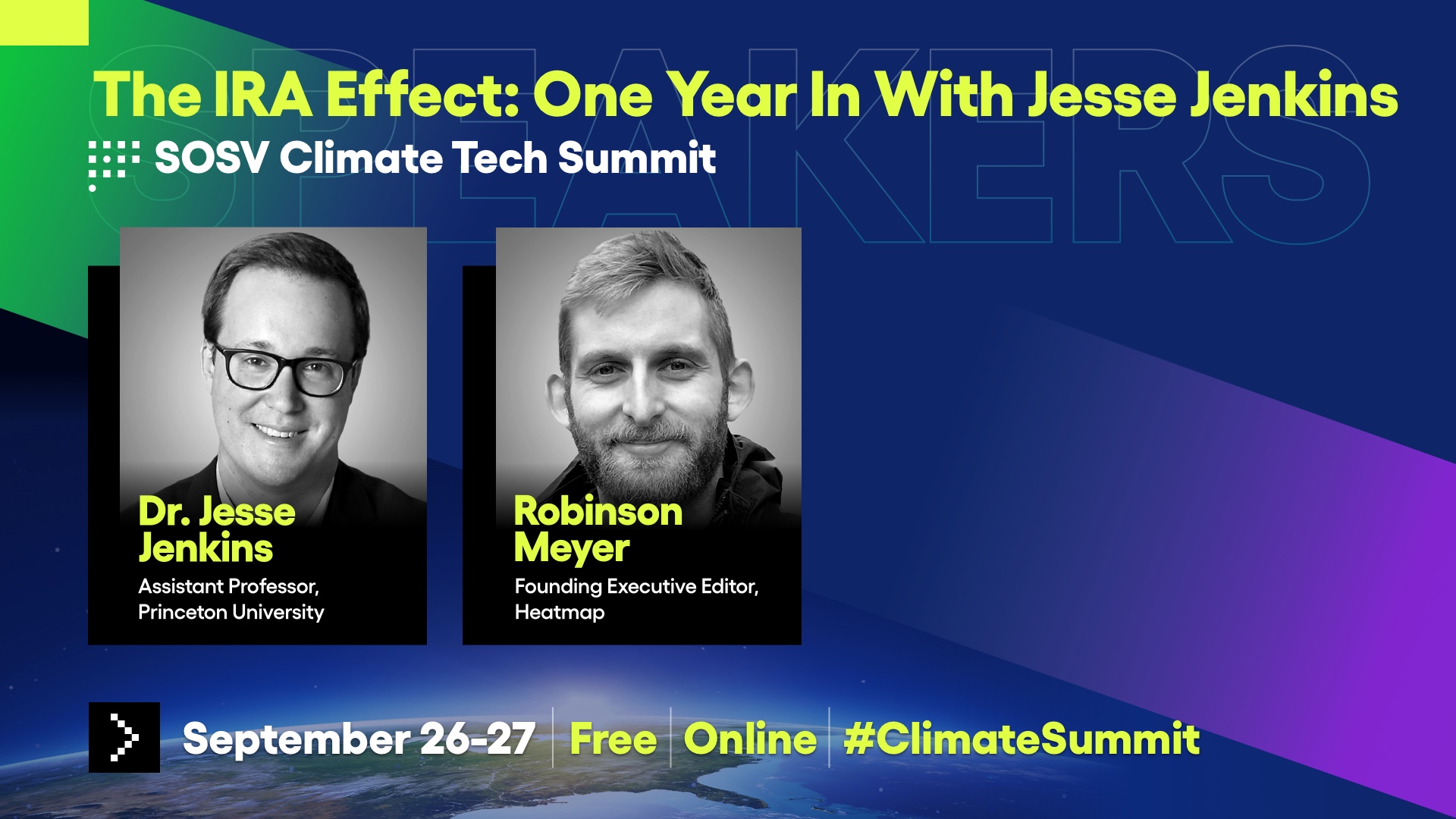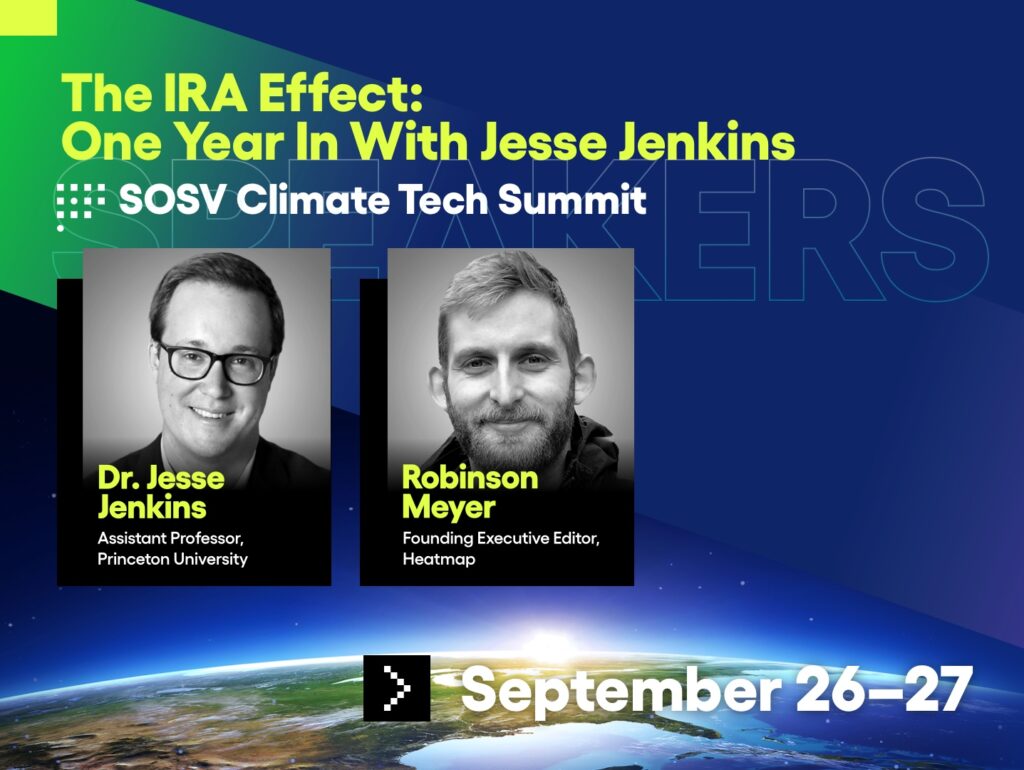
When Princeton’s Jesse Jenkins releases a new report on net-zero pathways and policy, the climate tech world pays careful attention. Jesse and his team at Princeton University’s ZERO Lab (Zero-carbon Energy systems Research and Optimization Laboratory) first made headlines in 2020 with their report “Net-Zero America.” It showed, among other things, that the U.S. needs to electrify everything possible to achieve net-zero emissions. From the New York Times to Mother Jones to The Wall Street Journal, Jesse continues to argue for mass electrification—but warns that without upgrades to U.S. grids, it won’t happen.
At the SOSV Climate Tech Summit (Sept 26-27 / free & virtual), Jesse discussed electrification with Robinson Meyer, founding executive editor of Heatmap, a media company focused on climate change. Is the grid in fact “…the linchpin in our efforts to decarbonize America,” as Jesse wrote recently? What role are climate tech startups playing in electrification, and what innovations are still needed?
The climate impact of electrification will depend on U.S. policy and regulation in the short term. A recent ZERO Lab report estimates that the $400 billion Inflation Reduction Act (IRA) will double the pace of emissions cuts in America from 2% to 4% annually, bringing emissions to 37-41% below their peak by 2030. That’s good news. The bad news is that the pace needs to be 6% to half emissions by 2030 (President Biden’s stated target). Moreover, that 4% is contingent on the U.S. upgrading its power grid.
Jesse, who worked with Senate staffers on the IRA (an experience he describes in Heatmap), is concerned about a lack of transmission lines to connect new, utility-scale renewables to the grid. Carbon-free electricity accounts for 40% of U.S. supply currently, a percentage that won’t budge without those new lines. Supply chain issues and onerous permitting processes have hampered efforts to build them. Meanwhile, the U.S. needs to more than double total electric supply between now and 2050 to meet anticipated demand. That’s a lot of solar, wind, geothermal, nuclear, etc. to deploy (but very doable, as Jesse describes in video here).
Here’s the catch: Jesse warns that power sector emissions could be worse rather than better in 2030 if we don’t build these transmission lines. Without them, the US will have to generate more electricity from fossil fuels, as IRA incentives will increase demand for electricity irrespective of how it’s generated.
Is electrification even feasible at the pace Jesse calls for? Do we have the workforce to build electric infrastructure at a scale rivaling FDR’s New Deal? What can climate tech innovators do to help?
Catch the full session—and all others from this year’s Summit—here.
The Speakers

Dr. Jesse D. Jenkins
Dr. Jesse D. Jenkins is an assistant professor and macro-scale energy systems engineer at Princeton University with a joint appointment in the Department of Mechanical and Aerospace Engineering and the Andlinger Center for Energy and Environment. He leads the Princeton ZERO Lab (Zero-carbon Energy systems Research and Optimization Laboratory), which focuses on improving and applying optimization-based energy systems models to evaluate and optimize low-carbon energy technologies, guide investment and research in innovative energy technologies, and generate insights to improve energy and climate policy and planning decisions. Dr. Jenkins earned a PhD and SM from MIT, worked previously as a postdoctoral fellow at the Harvard Kennedy School, and spent six years as an energy and climate policy analyst prior to embarking on his academic career.

Robinson Meyer
Robinson Meyer is the founding executive editor of Heatmap, a new media company focused on climate change. He is also a contributing Opinion writer at The New York Times. Meyer was previously a staff writer at The Atlantic, where he covered climate change, technology, and science. In March 2020, he co-founded the COVID Tracking Project, an award-winning volunteer effort that collected coronavirus data from every U.S. state and territory. He lives in Washington, D.C.

